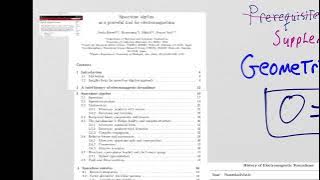Product (mathematics)
In mathematics, a product is the result of multiplication, or an expression that identifies objects (numbers or variables) to be multiplied, called factors. For example, 30 is the product of 6 and 5 (the result of multiplication), and is the product of and (indicating that the two factors should be multiplied together). The order in which real or complex numbers are multiplied has no bearing on the product; this is known as the commutative law of multiplication. When matrices or members of various other associative algebras are multiplied, the product usually depends on the order of the factors. Matrix multiplication, for example, is non-commutative, and so is multiplication in other algebras in general as well. There are many different kinds of products in mathematics: besides being able to multiply just numbers, polynomials or matrices, one can also define products on many different algebraic structures. (Wikipedia).




















